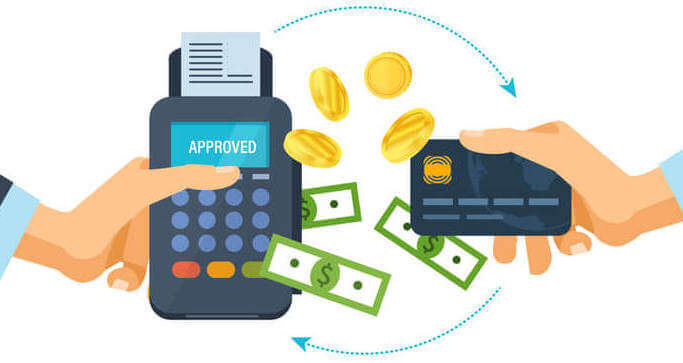The system of breaking down transactions using a simpler and more unified method is called Transaction Processing.
A Transaction Processing System or TPS is software that keeps track of transactions by processing the data in an online recording system.
- Definition
- Types
- Batch Vs real-time processing
- Features
- How it works
- Components
- Examples
- Limitations
- Functions
- Databases for TPS
- Backup procedures
Types of Transaction Processing Systems
-
Batch processing
Batch processing is when clusters of transactions are refined simultaneously using a computer system.
This method, although designed to be efficient for breaking down bulky series of programs, has a drawback
as there is a delay in the transaction result. -
Real-time Processing
Real-time processing carries out its transactions exclusively; this method ensures a swift reply on the condition of the transaction result. It is an ideal technique for dealing with singular transactions.
Batch vs. Real-Time Processing
- The processing of a group of transactions uniquely differentiates the batch processing from the real-time processing that only runs exclusive transactions.
- Batch processing is functional for computing complex data transactions. This is extremely valuable for reducing costs for large organizations that deal with high data traffic. All of this is very different from real-time processing that is efficient in less complex situations.
- The real-time processing offers timely results on each processed transaction that makes it more applicable for smaller enterprises, unlike the batch processing that is time-consuming.
- In batch processing, user interaction is not required as soon as the transaction begins, however, the real-time processing needs user interface to process each transaction completely.
Transaction Processing System Features
There are several features involved in a good transaction processing system. A few of these critical features are described below.
-
Performance
The concept behind the use of TPS is to efficiently generate timely results for transactions. Effectiveness is based on the number of transactions they can process at a particular time.
-
Continuous availability
The transaction processing system should be a very stable and reliable system that must not crash easily. Disruption of TPS in an organization can lead to work disturbance and financial loss.
-
Data integrity
The TPS must maintain the same method for all transactions processed, the system must be designed to effectively protect data and overcome any hardware/ software issues.
-
Ease of use
The TPS should be user-friendly in order to encourage the use and also decrease errors from inputting data. It should be structured in such a way that it makes it easy to understand as well as guarding users against making errors during data-entry.
-
Modular growth
The TPS hardware and software components should be able to be upgraded individually without requiring a complete overhaul.
-
Controlled processing
Only authorized personnel, staff members, or employees should be able to access the system at a time.
How does a Transaction Processing System Work?
-
Processing in a batch
Processing batch transactions(1) requires data collection and batch grouping. Data collected are stored in the form of batches and may be processed anytime. This long-established technique was used widely in the absence of infotech.
-
Processing in real-time
Recent technology innovations gave rise to real-time processing(2). RTP ensures instant data processing with the aim of providing a quick verification of the transaction. It is highly versatile as it can work effectively as a multi-user interface and can also be accessed anywhere there is an online network.
Video on Benefits of Transaction Processing System:
Components of Transaction Processing System
Below are some of the components involved in a TPS:
- Inputs: These are source documents gotten from transactions which serve as inputs into the computer’s accounting system examples are invoices, and customer orders.
- Processing: This requires the breaking down of information provided by the inputs.
- Storage: This is saved information in TPS memory, it may be in the form of ledgers.
- Output: Any generated record may serve as the output
-
Examples of Transaction Processing System
- TPS accumulates data about transactions and also initiates processing that transforms stored data. Examples include order processing, employee records, and hotel reservation systems.
- Batch transaction process examples include bill generation and check clearances.
- Examples of real-time transaction processes are the point of sale terminals (P.O.S) and microfinance loan systems.
-
Who Uses Transaction Processing Systems?
Users of the transaction processing system are mainly informal users. Although authorized personnel may also need to access data stored by the TPS.
What are the Limitations of Transaction Processing Systems?
- Managing operations with the TPS can be complicated if the company is not big enough to efficiently use the transaction processing system.
- TPS needs both hardware and software components to efficiently manage high data volume. This capacity makes TPSs susceptible to software security breaches in the form of the virus and faulty hardware issues such as power outage can disrupt the whole system.
- Effective integration of a TPS in a company operation requires skilled personnel, it also requires a link with associate company branches to maintain a secure flow of information. This high requirement can create instability and flux in the company’s daily operations.
-
Functions of Transaction Processing System
Transaction Processing Systems can execute input, output, storage, and processing functions.
- Input functions: This includes the securing of data on the source document, entering of input data in the system and also validate data.
- Output functions: This includes the production of the report of the transaction via monitor or paper, examples are exception reports, detail reports, and summary reports.
- Storage functions: This is the process by which data is stored. It entails the storage of information, accessing, sorting, and updating stored data.
- Processing functions: This entails the transformation of data, it includes calculation, computation, and apt result.
-
Databases for Transaction Processing Systems
Some types of database systems for transaction processing include the following:
-
Hierarchical Database
It comprises a network of nodes and branches. This structure arranges data in a top-down system, where a higher level node branches out to lower-level nodes.
-
Network Database
It arranges data as a chain of nodes linked via branches. Higher-level nodes can have as many branches as possible, lower-level nodes can also be connected to more than one higher-level node.
-
Relational Database
This involves the use of related tables to present and combine data effectively.
Backup Procedures (Storing and Retrieving Data)
Backup procedures are required by organizations to counter breakdowns and reduce data loss. A copy of data used to restore the system in case of system failure is known as a backup. Data can be stored in magnetic tapes, partial backups or updated in real-time.
The success of a backup relies on the implementation of appropriate procedures. The success of a backup depends on a resourceful recovery process.
Types of Recovery
- Backup Recovery: this can be used to reverse required changes to a record.
- Forward Recovery: this can be used to save transactions made between the last backup and the up to date time.it works by backing up a copy of the database and it is more proficient because it does not need to save each transaction.
Conclusion
A Transaction Processing System (TPS) is an infotech used to accumulate, store, modify and retrieve data transactions. Transaction processing systems present a unique response to user requirements, although planning to choose the most appropriate method relies heavily on the quantity of data and the type of business.





